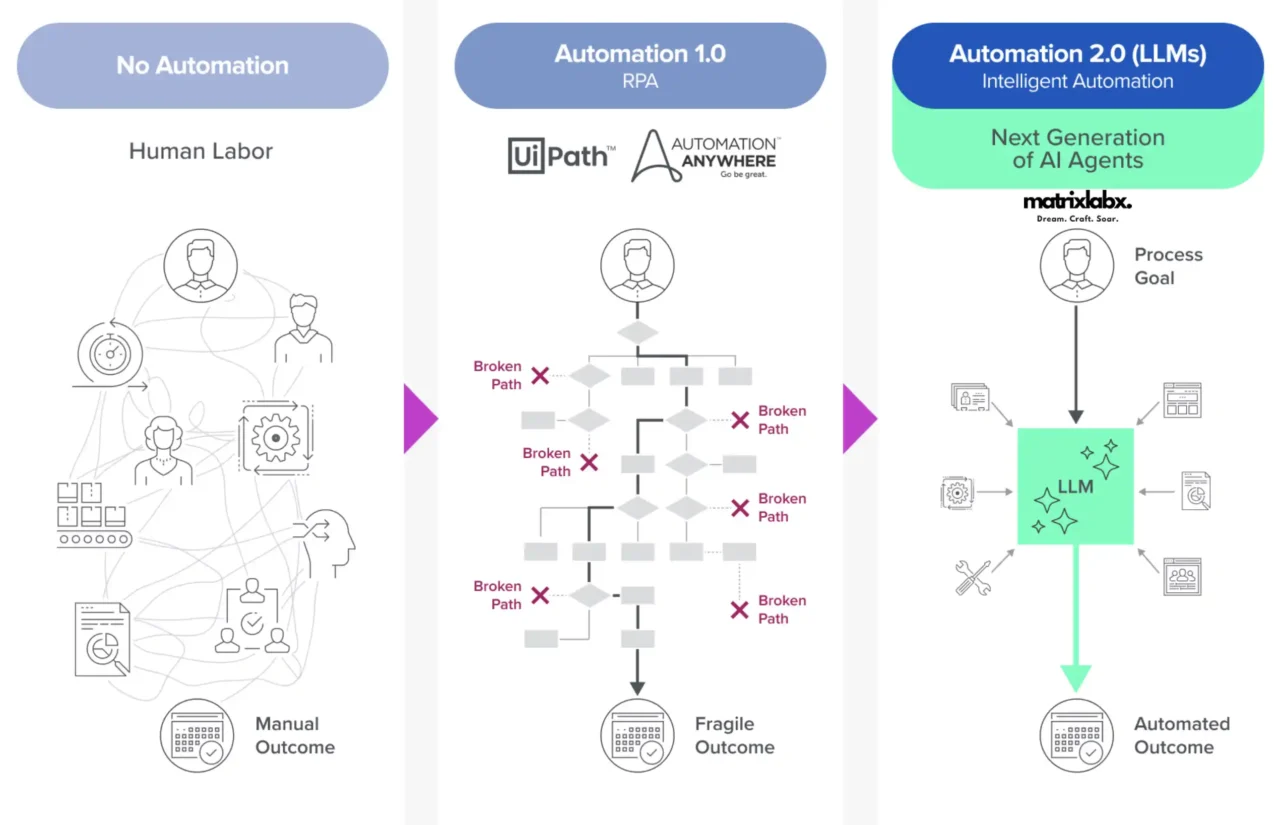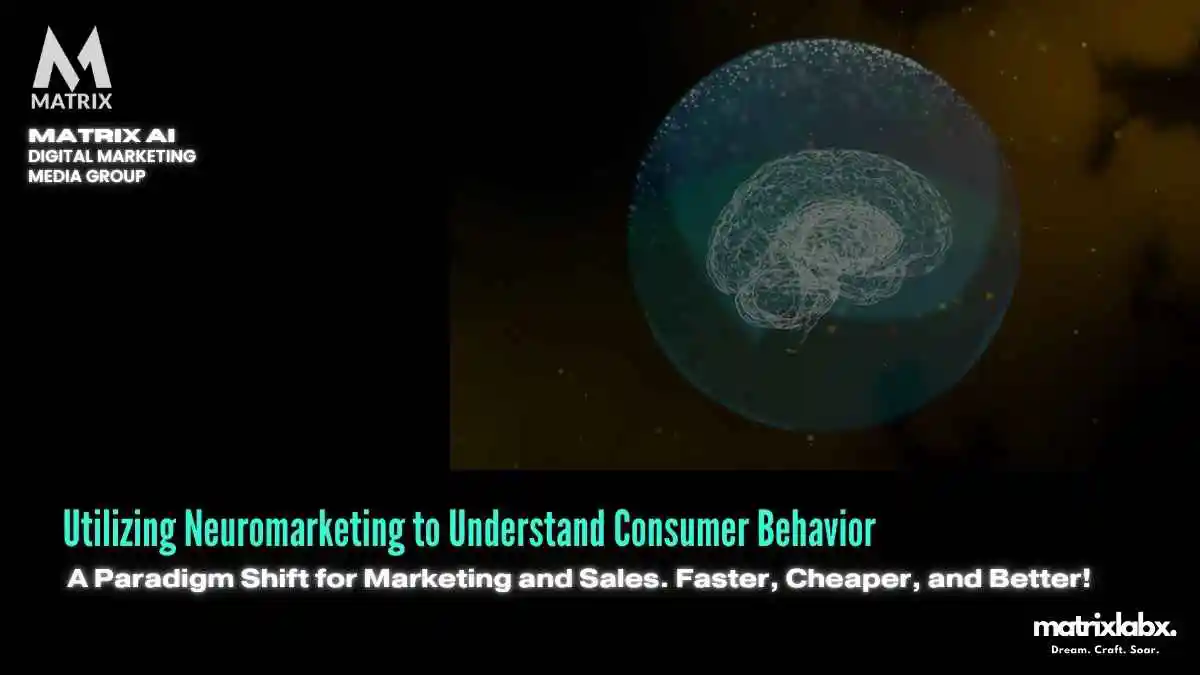Utilizing Neuromarketing to Understand Consumer Behavior for More Sales.
Learn Why Utilizing Neuromarketing to Understand Consumer Behavior for More Sales.
Cognitive Science Angle
“Neuromarketing is revolutionizing our understanding of consumer behavior by shifting focus from what people say to how their brains react. Traditional surveys often suffer from bias or memory errors—neuromarketing tools like EEG and fMRI bypass that and tap directly into subconscious preferences.” — Dr. Elena Ramirez, Cognitive Neuroscience Analyst, MindBridge Institute.
Data & AI Integration
“When neuromarketing data is combined with machine learning, we see hyper-personalized insights into consumer behavior. We’re moving beyond A/B testing into real-time, biometric-driven user experience optimization.” — Zhao Chen, AI & Marketing Analyst, Quantovue Analytics.
Introduction: The Evolution of Consumer Insights
Ten years ago, marketers relied heavily on traditional surveys and focus groups to gauge consumer preferences and behaviors.
Fast forward to today, and a staggering 90% of the world’s data has been generated in just the last two years, a significant portion of which pertains to consumer behaviors and preferences collected through various digital footprints (MatrixLabX).
This shift highlights an exponential increase in available data and a transformative change in how this data is collected and analyzed to understand consumer behavior deeply and accurately.
Understanding Neuromarketing
Neuromarketing emerges as a revolutionary field at the intersection of marketing and neuroscience. It involves using sophisticated neuroscientific methods to analyze and understand human behavior concerning marketing interactions.
Techniques such as functional Magnetic Resonance Imaging (fMRI) and Electroencephalography (EEG) provide insights into the consumers’ brain activity and physiological responses when exposed to marketing stimuli.
This approach offers an unfiltered view of consumer reactions and emotions, bypassing the biases often associated with self-reported data from traditional marketing research methods.
Neuromarketing helps decode the ‘why’ and ‘how’ behind consumer decisions, tapping into subconscious preferences that influence buying behavior.
This invaluable insight allows marketers to craft strategies that are effective and deeply aligned with consumers’ intrinsic desires and needs.
Understanding Consumer Behavior

Understanding consumer behavior has become more complex due to the diversity of channels and touchpoints, and neuromarketing is a key methodology.
Utilizing Neuromarketing to Understand Consumer Behavior offers marketers a profound avenue for connecting with their audiences on a level that traditional methods cannot reach, ultimately enhancing engagement and driving consumer loyalty.
This article explores neuromarketing’s applications, benefits, and ethical considerations, providing a comprehensive understanding of its impact on contemporary marketing practices.
Utilizing Neuromarketing to Understand Consumer Behavior
In today’s competitive marketplace, understanding consumer behavior is paramount for businesses aiming to connect effectively with their target audience.
Neuromarketing emerges as a powerful tool in this quest. It combines principles from neuroscience and marketing to uncover the underlying motivations behind consumer decisions.
Who can benefit from neuromarketing? Businesses of all sizes, from startups to multinational corporations, can utilize neuromarketing techniques to gain insights into customers’ preferences and behaviors.
Marketing teams, product developers, and brand strategists are particularly well-suited to apply these findings to enhance their campaigns and product offerings.
Google Ads Checklist – Download Now! 🚀
Struggling to get the most out of your Google Ads? 🔥 Download our Google Ads Optimization Checklist and take your campaigns to the next level!
✅ Maximize Clicks & Conversions
✅ Lower Your Cost-Per-Click (CPC)
✅ Improve Ad Quality Scores
✅ Target the Right Audience
This free checklist will help you set up, optimize, and scale your Google Ads campaigns for maximum ROI.
What is neuromarketing?
At its core, neuromarketing involves studying brain activity and physiological responses to marketing stimuli, such as advertisements, product designs, and branding elements.
Using advanced technologies like fMRI (functional Magnetic Resonance Imaging) and eye-tracking, researchers can observe how consumers react on both conscious and subconscious levels. This data provides invaluable insights into the emotional and cognitive processes that drive purchasing decisions.
Where can neuromarketing insights be applied?
The implications of this research extend to various aspects of marketing, from crafting compelling advertisements and designing user-friendly websites to optimizing product placement and enhancing customer experiences in retail settings.
How can businesses implement neuromarketing?
First, organizations can partner with specialized neuromarketing firms or neuroscience researchers to conduct studies tailored to their brand.
Next, they can analyze the results to identify trends and preferences within their target demographic.
Finally, by integrating these insights into marketing strategies, businesses can refine their messaging and increase engagement, leading to higher conversion rates and customer loyalty.
Retail/CPG Industry Insight
“Neuromarketing is helping brands fine-tune everything from packaging design to shelf placement. Eye-tracking and emotion recognition technologies are uncovering which cues trigger emotional engagement—and ultimately, sales.”
— Priya Malhotra, Senior Analyst, Retail Innovations Group
Neuromarketing offers a nuanced understanding of consumer behavior that can transform how businesses connect with their audience, paving the way for more effective marketing strategies.
Imagine you are a seasoned chef in a bustling, high-end restaurant. You aim to create exquisite dishes that visually captivate your patrons, ensuring they return for more.
To achieve this, you meticulously select ingredients based on their freshness, source customer feedback on taste preferences, and adjust your recipes to perfect the dining experience.
Now, envision applying this culinary artistry to marketing. Using neuromarketing to understand consumer behavior is akin to an expert chef tweaking recipes based on direct feedback from diners.
Just as a chef uses his senses and skills to enhance his creations, marketers use neuromarketing tools to delve into the consumer’s brain, gathering data on how they react emotionally and cognitively to different marketing stimuli.
This insight allows marketers to craft strategies that are seen, heard, and felt, ensuring each campaign resonates deeply and creates lasting impressions.
So, if you are eager to know why your customers prefer one product over another or how they feel about your brand, think like a chef. Use neuromarketing in your kitchen, and cook up strategies to have consumers returning for seconds.
Unlock Your Website’s Full Potential with a SEO Fix Program
Even the best websites can struggle without robust SEO. Our $2,500 SEO Quick Fix Package is crafted for businesses that demand fast, measurable results. We start with an in-depth SEO audit to diagnose your site’s performance, then implement five targeted optimizations to boost your rankings and drive more traffic.
Challenges and Opportunities of Utilizing Neuromarketing to Understand Consumer Behavior
Neuromarketing, which combines neuroscience and marketing principles, offers unique insights into consumer behavior by studying brain responses to marketing stimuli.
While this innovative approach presents significant opportunities, it also comes with several challenges that marketers must navigate.
Challenges
- Ethical Concerns: One of the primary challenges of neuromarketing is the ethical implications of manipulating consumer behavior. There is a fine line between understanding consumer preferences and exploiting cognitive biases to influence decisions. Marketers must ensure their practices respect consumer autonomy and privacy, avoiding deceptive or coercive tactics.
- Complexity of Human Behavior: Human decision-making is influenced by many factors, including emotions, social contexts, and personal experiences. Neuromarketing, while insightful, may oversimplify these complexities by focusing primarily on brain activity. This can lead to misunderstandings or misinterpretations of consumer motivations.
- High Costs and Technological Limitations: Implementing neuromarketing techniques can be expensive. Advanced neuroimaging technologies like fMRI and EEG require significant investment and expertise. Additionally, the infrastructure to analyze and interpret the data generated can be resource-intensive, limiting accessibility for smaller businesses.
- Data Interpretation and Integration: The data collected from neuromarketing studies can be complex and multifaceted. Translating neurological responses into actionable marketing strategies poses a challenge, as marketers must integrate these insights with traditional qualitative and quantitative research methods. Ensuring the findings are relevant and applicable to real-world marketing strategies can be difficult.
Opportunities
- Enhanced Consumer Insights: Neuromarketing provides deeper insights into consumer preferences and behaviors than traditional methods. By understanding subconscious responses, marketers can tailor their campaigns to resonate more effectively with target audiences, improving engagement and conversion rates.
- Optimization of Marketing Strategies: Neuromarketing insights can help businesses refine their messaging, branding, and product design. By identifying which stimuli evoke positive emotional responses, companies can create more compelling advertisements and experiences that align with consumer desires.
- Segmentation and Personalization: Neuromarketing can help identify different consumer segments based on neurological responses. This enables brands to develop personalized marketing strategies that cater to various demographics’ unique needs and preferences, enhancing customer satisfaction and loyalty.
- Predictive Capabilities: By understanding how consumers think and feel at a neurological level, brands can more accurately predict future behaviors. This predictive power can help businesses stay ahead of trends, optimize inventory management, and create targeted marketing campaigns that align with consumer desires before they are fully expressed.
Importance of Neuromarketing
Understanding consumer behavior is crucial for businesses in an increasingly competitive marketplace. Neuromarketing equips marketers with tools to gain a nuanced understanding of what drives consumer decisions.
By examining the psychological and emotional factors influencing purchasing behavior, companies can create more effective marketing strategies that resonate with their audiences.
Moreover, leveraging neuromarketing insights becomes vital as consumers become more discerning and demand more personalized experiences.
Brands that successfully navigate the challenges of neuromarketing stand to gain a significant competitive advantage, leading to increased market share, customer loyalty, and profitability.
As the field continues to evolve, fostering ethical practices and integrating neuroscience with traditional marketing will be key to harnessing the full potential of neuromarketing.
Utilizing Neuromarketing to Understand Consumer Behavior
Case Study 1: Coca-Cola – Rebranding and Emotional Connection
Brand Description and Initial Planning
One of the most recognizable brands globally, Coca-Cola has been synonymous with happiness and refreshment. In 2016, Coca-Cola embarked on a rebranding initiative to revitalize its image and appeal to younger consumers.
The initial strategy involved introducing the “Taste the Feeling” campaign, which focused on consumers’ emotional connection with the brand rather than just the product itself.
The company aimed to deepen engagement by tapping into consumers’ emotions and experiences of drinking Coca-Cola.
Leveraging Neuromarketing
Coca-Cola employed neuromarketing techniques to gauge emotional responses to advertisements and packaging designs to support this rebranding effort.
Using EEG (electroencephalography) and fMRI (functional magnetic resonance imaging) technologies, they analyzed brain activity and measured emotional reactions to marketing stimuli.
For instance, during testing, the brand discovered that nostalgic imagery and personal connections evoked stronger emotional responses than mere product shots.
However, Coca-Cola faced challenges when some advertisements did not resonate well with consumers, leading to negative feedback. Instead of viewing this as a failure, the brand leveraged neuromarketing data to refine its approach.
By identifying which elements caused disengagement, they quickly adjusted their marketing materials and strategies to focus on what truly resonated with the audience.
Lessons Learned
- Emotional Engagement is Key: Coca-Cola learned that tapping into consumers’ emotions is essential for creating meaningful connections. This insight led to successful campaigns that resonated deeply with audiences.
- Data-Driven Adaptability: The ability to adapt marketing strategies based on neuromarketing insights allowed Coca-Cola to refine its campaigns dynamically, mitigating risks associated with unfavorable consumer responses.
- Consumer Experience Over Product: Focusing on the consumer’s overall experience rather than just the product can yield higher engagement and brand loyalty.
Case Study 2: Frito-Lay – Snack Food Innovation
Brand Description and Initial Planning
Frito-Lay, a subsidiary of PepsiCo, is a leading producer of snack foods, including iconic brands like Doritos and Lay’s.
In 2017, Frito-Lay aimed to innovate its product line by introducing healthier snack options to meet the growing consumer demand for healthier eating habits.
The brand’s initial strategy involved market research and product testing to identify potential new flavors and ingredients that would appeal to health-conscious consumers.
Mitigating Failures with Neuromarketing
Frito-Lay employed neuromarketing techniques, including eye-tracking and facial coding, to analyze consumer reactions to new product concepts and packaging designs.
They found that traditional focus group feedback did not always align with actual consumer behavior; many products favored in discussions did not perform well in the market.
When some of their new healthier snack options failed to achieve desired sales, Frito-Lay used neuromarketing data to reassess their product positioning.
They discovered that the packaging failed to communicate the brand’s quality and taste effectively, which led to consumer skepticism about the new offerings.
Using neuromarketing insights, they re-engineered their packaging and marketing strategies to highlight taste, quality, and health benefits.
Lessons Learned
- Beyond Surveys and Focus Groups: Neuromarketing provided Frito-Lay with insights that traditional research methods could not capture, highlighting the importance of behavioral data in understanding consumer preferences.
- The Importance of Presentation: The study underscored that how a product is presented—its packaging and messaging—plays a crucial role in consumer perception and acceptance, particularly for new products.
- Iterative Testing: Continuous testing and adaptation using neuromarketing can help brands stay aligned with consumer preferences, ensuring new products resonate in the competitive snack food market.
These case studies illustrate the significant advantages of neuromarketing in understanding consumer behavior.
By leveraging advanced techniques to analyze emotional responses and perceptions, brands like Coca-Cola and Frito-Lay have refined their strategies, innovated products, and fostered deeper connections with their audiences.
The lessons learned highlight the importance of adaptability, emotional engagement, and the value of data-driven insights in today’s competitive marketplace.
Matrix Marketing Group is at the forefront of harnessing advanced AI digital marketing services to tap into the intricacies of consumer behavior through neuromarketing.
As outlined in the article “Utilizing Neuromarketing to Understand Consumer Behavior,” neuroscience principles can significantly enhance marketing strategies by revealing how consumers think, feel, and make decisions.
AI Integration in Marketing
Nearly 60% of marketers now rely on AI to streamline processes, generate content, and analyze data, a trend expected to grow in 2025, underscoring the role of AI-driven DMaaS platforms in modern marketing strategies. See pricing.
Utilizing AI-driven Analytics To Decode Emotional Triggers
Matrix Marketing Group leverages these insights by using AI-driven analytics to decode emotional triggers and cognitive biases influencing purchasing behavior.
By integrating neuromarketing techniques with data analysis, the agency crafts targeted campaigns that resonate with consumers on a deeper level, ultimately leading to higher engagement and conversion rates.
Their services encompass a comprehensive suite of tools that assess consumer responses to various stimuli, allowing brands to refine their messaging and optimize their marketing funnels.
This synergy between AI and neuromarketing empowers businesses to create personalized experiences that attract attention and foster loyalty.
Matrix Marketing Group’s innovative approach positions clients to navigate consumer psychology in an ever-evolving digital landscape.
It ensures they stay ahead of the competition while building meaningful connections with their target audience. By understanding the science behind consumer behavior, businesses can drive impactful marketing strategies that deliver results.
In conclusion
This exploration of neuromarketing has illuminated how our subconscious influences consumer behavior.
We have discussed how brain imaging and biometric analysis can reveal the emotional and cognitive responses that drive purchasing decisions. By understanding these underlying mechanisms, brands can craft more effective marketing strategies that resonate deeply with their target audience.
The main takeaway is clear: to stay competitive in today’s marketplace, marketers must leverage neuromarketing insights to align their offerings with consumers’ preferences and desires. This understanding not only enhances customer engagement but also fosters brand loyalty.
As you reflect on these insights, consider how your marketing strategies might change if you prioritize the emotional connections and subconscious triggers that shape consumer behavior.
Embrace the potential of neuromarketing to transform your approach and unlock the deeper motivations that drive your audience.
The future of marketing is not just about selling a product; it is about creating meaningful experiences that connect with consumers on a fundamental level.





